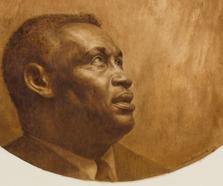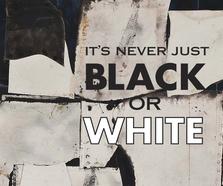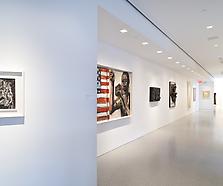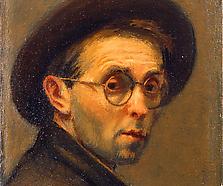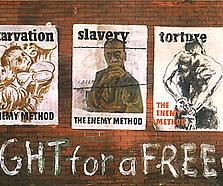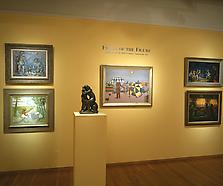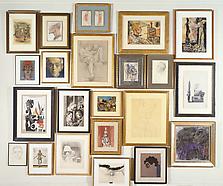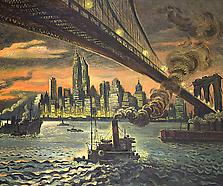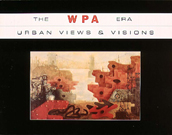One of the most admired and collected artists of his generation, Ben Shahn was a painter, photographer, printmaker and political activist, who is best known for his poignant narrative paintings of American life. Shahn was born in Kovno, Lithuanian and his father, a socialist and fervent anti-czarist, was exiled in 1902 for participating in revolutionary activities. His father eventually immigrated to the United States, and in 1906, a young Ben Shahn and his siblings joined him in New York City. At fourteen, Shahn apprenticed with a Manhattan lithographer (1913-16). His lucrative career as a journeyman lithographer made it possible for him to finance his academic and artistic education, and he attended the Art Students League (1916-17), New York University (1919), City College of New York (1920-21), and the National Academy of Design (1921). In 1925 and 1928, he took extended trips to Europe, studying old master paintings and the work of European modernists. Shahn did not subscribe to the avant-garde philosophy that art existed in a realm above the concerns of everyday life. On the contrary, he believed that artists had a moral obligation to express their social and political views through art. He stated: “It is not just the artist’s experience, but his values, his judgments… that live in the work of art and make it significant to the public.” In 1929, Shahn shared a Manhattan studio with photographer Walker Evans. With Evans’s encouragement, Shahn began taking photographs of New York City, and during the Great Depression, Shahn joined the staff of the Special Skills Division of the Resettlement Administration/ Farm Security Administration (RA/FSA) (1935). In addition to his work with the RA/FSA, Shahn executed murals for the Federal
Ben Shahn (1898-1969)
Exhibitions
New & Noteworthy
Prints & Publications
Artist Information
Art Project and the Public Art Section of the Treasury Department and continued to work on his own easel paintings. In 1932, Shahn had his first critical and commercial success when his series The Passion of Sacco and Vanzetti was exhibited at Edith Halpert’s Downtown Gallery in New York City. In 1942, Shahn began working for the Office of War Information (OWI), creating posters for the government’s anti-fascist propaganda campaign. However, OWI officials rejected most of his designs because they were considered too violent; he resigned in 1943. From 1944 to 1947, Shahn worked for the graphics division of the Congress of Industrial Organization’s Political Action Committee (CIO-PAC), and in 1948 he was a member of the graphic arts division on Henry Wallace’s Presidential campaign. During the Cold War, Shahn’s work became increasingly symbolic and allegorical, yet he continued to assert that art should be a means of political expression. Even though right-wing politicians attacked his work as communistic, by the late 1940s Shahn was one of the few American artists who could earn a living solely from painting. Despite his celebrity, he continued working as a graphic artist and serving the social and political causes he believed in. In 1947, Shahn had his first major retrospective at the Museum of Modern Art, and in 1954, MoMA organized a second exhibition for the American Pavillion at the 27th Venice Biennial. Shahn continued to paint, illustrate, teach and remain politically active until his death at the age of seventy-one. Today, Shahn’s work can be found in major museum collections throughout the United States and abroad and his work has been the subject of numerous exhibitions and publications. Harvard University’s Fogg Art Museum and Fine Arts Library houses the Stephen Lee Taller Ben Shahn Archive as well as a substantial collection of Shahn’s photographs.




